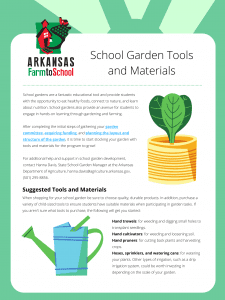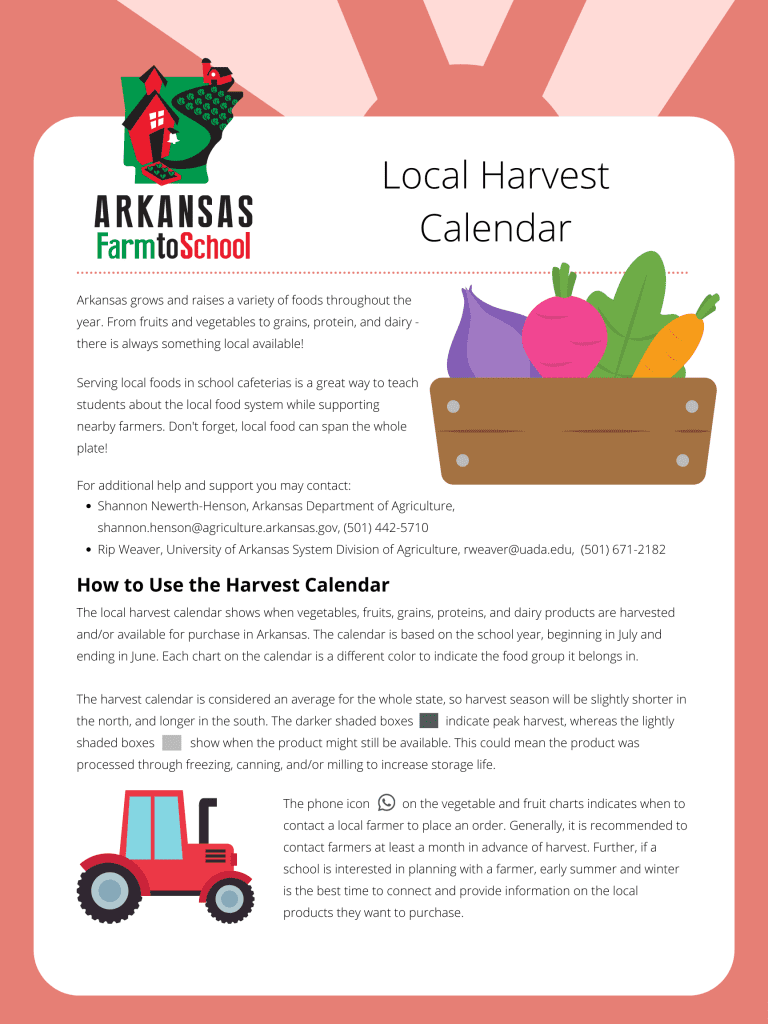Build and Plant
School gardens are living laboratories that create teaching opportunities for nutrition, agriculture, and experiential education across all disciplines. School gardens can be an indoor herb garden in a windowsill of a classroom, outdoor raised beds, in-ground farms, or even a greenhouse. Gardening help children discover where food comes from and develop healthy eating habits. Further, research shows that when a student plants a seed, they are more likely to taste and try the food when it is ready to harvest resulting in a greater acceptance of fruits and vegetables.
It can be difficult to know where to begin if you are interested in starting a school garden. A great place to start is by forming a farm to school committee and action planning.
Build and Plant
Once you have assembled your team and set goals for your program, it’s time to break ground and get to work!
The next steps include planning the layout and structure, gathering tools and materials, and planting.
As part of the Arkansas Farm to School Network Conversations, Luke Freeman from the National Center for Appropriate Technology (NCAT) led a discussion on how to start a school garden and determine what to plant in the spring and summer.
Additionally, many resources have been created to help you decide the layout and structure, tools and materials, and how to plant the school garden.
Layout & Structure and Tools & Materials
When choosing the location of your garden, the first decision is whether you want to plant an indoor or outdoor garden. You should consider available space and resources for your project, as well as the amount of time your team is willing to devote to the garden.
Indoor: If you want to start small or do not have access to an outdoor growing space an indoor garden is a great option! A simple way to grow indoors is windowsill gardening.
Outdoor: In the outdoors you can plant in containers, raised beds, or in-ground depending on what is best for your location. Be sure to consider how the garden will have access to sun, water, soil, air, and space!
When purchasing for your school garden be sure to choose quality, durable products. In addition, purchase a variety of child-sized tools to ensure students have suitable materials when participating in garden tasks.
Gathering all of the tools and materials needed for your school garden can be a daunting task, but it does not have to break the bank! Put out a call for donations to your school community. Families may have some of these items lying around, and be willing to donate materials. You can also reach out to local hardware or garden supply stores for donations, gift cards, or in-kind donations.
Planting the School Garden
Although it can seem difficult to decide what to grow in your school garden, it is helpful to first consider the goals of your garden and which plants align with those goals. For example, if you started your garden in order to promote healthy eating habits, grow a variety of fruits and vegetables that can be harvested while school is in session. Radishes are one of the quickest growing vegetables and a fun one for students to taste. Watch out, they can be spicy!
Some schools want to grow more than just fruits and vegetables. If you want to teach students about plant biology, fill your garden with native plants for pollinators. Students can document the plant growth and observe local bees, butterflies, and other animals in real time. You could even create a sensory garden to teach about the five senses. Preparing your garden with intentional connections to the classroom is a great way to enrich student learning!
Be mindful of the school calendar when choosing plants for your garden. To ensure that food can be harvested while students are at school, focus on plants that thrive in fall, winter, and spring; during cooler weather. Peas, greens, broccoli, cauliflower, strawberries, turnips, radishes, carrots, and other root vegetables are ideal for these seasons.
Check out the resources below: Planting the School Garden handout, the Arkansas School Garden Planting Calendar, and the Local Harvest Calendar for more guidance.





